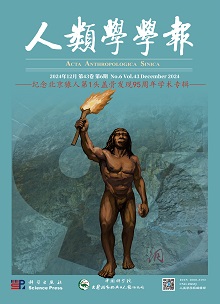Cluster analysis and evolutionary relationships of Chinese macaques
Jiang Xuelong, Wang Yingxiang, Ma Shilai, He Yuanhui
1992, 11(02):
184-191.
 Asbtract
(
224 )
Asbtract
(
224 )
 PDF (495KB)
(
61
)
Related Articles |
Metrics
PDF (495KB)
(
61
)
Related Articles |
Metrics
There are five species of macaques in mainland China: M. mulatta, M. assamensis, M. thi-betana, M. nemestrina and M. arctoides. The cluster analysis of 35 proportional characters ofskull demonstrates that: M. assamensis and M. thibetana have the closest relationship, then clu-ster with M. nemestrina to form one branch, and M. mulatta and M. arctoides form anotherbranch, finally, all the five species cluster together. Interspecific Euclidean distancesand groupings support Fooden's (1976, 1980) classification of the genus Macaca into four speciesgroups. The phylogeny tree also shows living Asian macaques diverged intotwo branches atearlier stage, one presents slower trends in foramen occipitale magnum and condylus occipita-lis moving ventrally forward, rostral shortening and vault enlarging, such as M. nemestrina,M. assamensis, M. thibetana. Excluding M. sylvanus, in this branch, silenus group radiatedfrom west to east and south, and sinica group radiated from west to east and north, the diver-gence of these two groups probably relates to allo-patric speciation. Another branch presents fa-ster trends in foramen occipitale magnum and condylus occipitalis moving ventrally forward,rostral shortening and vault enlarging, such as M. mulatta, M. arctoides. In this branch, M.arctoides has sympatric distribution with fascicularis group in heartland area of South Asia,the divergence probably relates to M. arctoides developed special external reproductive organand they tended to adapt different habitats. The result differs from other authors in that M.arctoides is more similar with M. mulatta, and less similar with M. assamensis and M. thibe-tana (Delson, 1980; Caldecou, 1986), or M. arctoides appears to be the most divergent of themacaques (Weiss et al., 1973; Melnik et al., 1985; Zhang et al., 1990).









